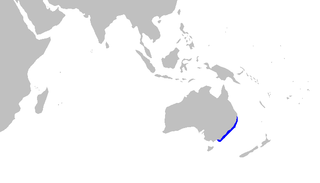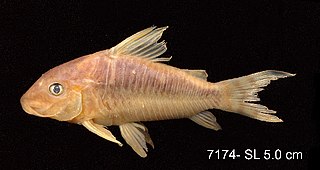
Mackerel is a common name applied to a number of different species of pelagic fish, mostly from the family Scombridae. They are found in both temperate and tropical seas, mostly living along the coast or offshore in the oceanic environment.

Herring are forage fish, mostly belonging to the family of Clupeidae.

The International Union for Conservation of Nature (IUCN) Red List of Threatened Species, also known as the IUCN Red List or Red Data Book, founded in 1964, is the world's most comprehensive inventory of the global conservation status of biological species. It uses a set of precise criteria to evaluate the extinction risk of thousands of species and subspecies. These criteria are relevant to all species and all regions of the world. With its strong scientific base, the IUCN Red List is recognized as the most authoritative guide to the status of biological diversity. A series of Regional Red Lists are produced by countries or organizations, which assess the risk of extinction to species within a political management unit.

"Sardine" and "pilchard" are common names for various species of small, oily forage fish in the herring family Clupeidae. The term "sardine" was first used in English during the early 15th century; a folk etymology says it comes from the Italian island of Sardinia, around which sardines were once supposedly abundant.

Desmodus is a genus of bats which—along with the genera Diaemus and Diphylla—are allied as the subfamily Desmodontinae, the carnivorous, blood-consuming vampire bats of the New World leaf-nosed bat family Phyllostomidae.

The piebald shrew is a shrew found in the Turan Lowland east of the Caspian Sea in Iran, Turkmenistan and Uzbekistan. It grows to 2 inches (5.1 cm) to 2.75 inches (7.0 cm) in length, and usually hunts for insects and lizards at night. It is the only extant member of the genus Diplomesodon. In 2011, A. Cheke described a new and possibly extinct species based on a 19th-century manuscript: Diplomesodon sonnerati. It was described again in 2018 to meet certain validity requirements of the ICZN code.
The New Zealand catshark is a catshark of the family Scyliorhinidae in the order Carcharhiniformes. This species is endemic to in the deep waters around New Zealand. Its length is up to 45 centimetres (18 in). The New Zealand catshark is a small, little-known deep water bottom shark. It is dark brown around the top with a few widely spaced pale spots, and white below. It feeds on bottom-living crustaceans. It is also completely harmless to humans.

The Australian spotted catshark is a catshark of the family Scyliorhinidae, found only around Australia between 32 and 38°S, at depths between 10 and 180 m. It can grow up to 90 cm. Females of this species were observed as being reproductive year round. They are also confirmed as being a single oviparous species.

A species that is extinct in the wild (EW) is one that has been categorized by the International Union for Conservation of Nature as known only by living members kept in captivity or as a naturalized population outside its historic range due to massive habitat loss.

Eleutherodactylus gossei is a species of frog in the family Eleutherodactylidae. It is endemic to Jamaica where it is widespread. An introduced population existed in Bermuda but appears to have been extirpated. The specific name gossei honors Philip Henry Gosse, an English naturalist, missionary, and science writer. Its common names are Jamaican forest frog and Spaldings robber frog, the latter apparently after Spaldings, its type locality.

The Somali hedgehog is a species of mammal in the family Erinaceidae. It is endemic to Somalia and Somaliland. The Somali hedgehog is nocturnal.
Lethrinops gossei is a species of cichlid endemic to Lake Malawi where it is usually found in deep waters with muddy substrates in the southern portion of the lake. This species grows to a length of 14.4 centimetres (5.7 in) SL.

Corydoras seussi is a South American catfish, family Callichthyidae. It was named after German ichthyologist Dr Werner Seuss. It quite strongly resembles the Corydoras gossei. However, it can be differentiated by its longer snout; nonetheless, it is not a 'true' longnose corydoras in the manner of, for example, Corydoras septentrionalis. The captive spawning of this catfish has not been documented.

Pellonulinae is a subfamily of freshwater herrings belonging to the family Clupeidae. Extant species are found in Asia, Africa and Australia, and members of the family occurred in North America in the Eocene.
Hydroporus gossei is a species of predaceous diving beetle in the family Dytiscidae. It is found in North America.
Lethrinops mylodon is a species of haplochromine cichlid which is endemic to Lake Malawi where it is widespread. It is a species of deeper water over sandy substrates which feeds mainly on gastropods

Sphaerodactylus richardsonii, also known commonly as Richardson's least gecko or the northern Jamaica banded sphaero, is a small species of lizard in the family Sphaerodactylidae. The species is endemic to Jamaica.













